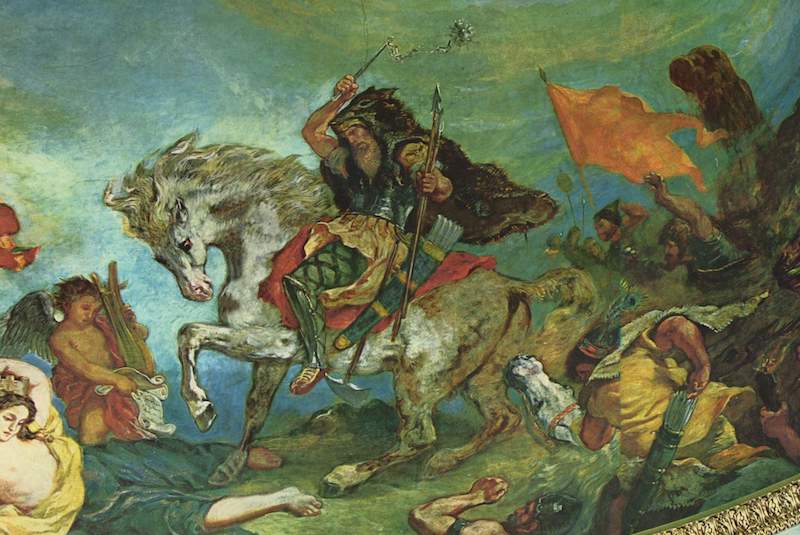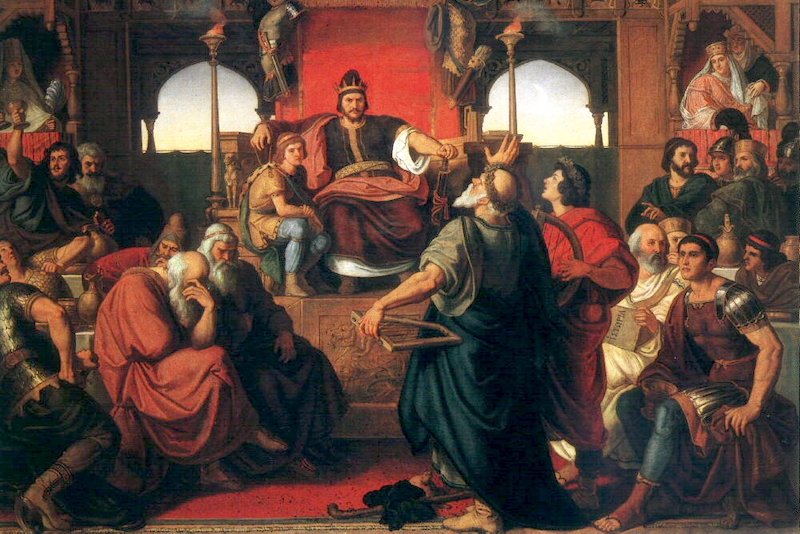Where is the tomb of the Great Hun Emperor Attila the Hun, who is known in historical records as Flagellum Dei, the Whip of God?

The Hun Emperor Attila the Hun, who invaded and destroyed both the western and eastern halves of the Roman Empire in the 5th century AD, died on his wedding night at the age of 58. Whether Attila died of natural causes or was killed by his new wife Ildico is a matter of debate.
- Jean-Jacques Rousseau – An evaluation on Confessions
- The First American Woman Astronomer: Maria Mitchell
But despite Attila’s dark end, does anyone know where he was buried? In a word, no. The tomb of the Hun emperor Attila the Hun (395-453 AD) has never been found and his exact whereabouts are unclear.
Attila was the leader of the Huns, a non-Christian people who lived on the Great Hungarian Plain and eventually conquered much of Central Europe. Attila was sometimes referred to in Latin as “Flagellum Dei”, which is usually translated as “the scourge of God”, but can also be called “the whip of God”.
Attila threatened but did not actually sack Rome and Constantinople. And Attila forced the emperors to pay him large amounts of gold in exchange for peace treaties that often did not last long. But while much is known about Attila’s war-mongering days, less is known about his funeral.
“There is only one surviving written source about Attila’s funeral,” says Zsófia Masek, a postdoctoral researcher in archaeology at the Hungarian Academy of Sciences. “This comes from the sixth-century writer Jordanes, who wrote in his book ‘Getica’ that Attila was buried in a triple coffin.
The innermost coffin was made of gold, the second of silver and the outermost of iron. Jordanes wrote that the gold and silver symbolized the wealth Attila had earned for the Huns, while the iron symbolized the Huns’ military might.
Jordanes wrote that the servants who helped build the tomb had been killed to keep its location secret, claiming that he got his information from records written by Priscus, a Roman diplomat who was in contact with Attila and others in his court. Jordanes also wrote that Attila was buried with precious stones, captured enemy weapons and ornaments, and that the servants were killed to keep these “great riches” “away from human curiosity”.

Where is his tomb?
Scientists are not sure where the tomb is or whether it is still intact.
László Veszprémy, a professor of history at the Pázmány Péter Catholic University in Budapest, Hungary, says it could be somewhere in the Hungarian Puszta (also known as the Great Hungarian Plain).
Veszprémy says that Attila set up his headquarters somewhere on the plain, and that his tomb is probably not far from there, “next to a river, or even in a riverbed”. “If the tomb was not looted in previous centuries, it may still be intact,” Veszprémy says.
Historians have been interested in finding the tomb for some time. “People have been interested in this tomb since at least the 13th century,” Veszprémy says.
Other scholars believe that the tomb is probably somewhere on this plain. “I believe that the burial site could be on the Great Hungarian Plain. There is no serious doubt against this hypothesis,” says Masek. “Of course, it is possible that it is located in the Serbian or Romanian parts of the Plain region, where the Huns also operated.”
It is unclear whether anything remains of Attila’s tomb, or whether it will ever be found. “Maybe one day someone will stumble across his tomb, but it’s unlikely to happen right away,” says Michael Maas, a professor of history at Rice University in Houston, Texas.
Another scientist is more optimistic. Ralph Mathisen, professor of history, classical and medieval studies at the University of Illinois Urbana-Champaign, says: “It will undoubtedly be found one day… It could be found robbed in antiquity.”
Valéria Kulcsár, associate professor of archaeology at the University of Szeged in Hungary, says there is a possibility that the tomb has been found before, but not identified with Attila. For example, a large collection of gold artifacts found in Nagyszéksós, Hungary, dates back to the time when the Huns flourished, but there are no human remains and it is unclear for whom they were buried.
One question raised by an academic is whether Attila’s tomb should be found. “Personally, I would rather have a mystery than an archaeological find waiting to be analyzed,” Masek says.
Utilized from Live Science. July 4, 2022.
